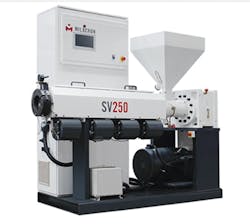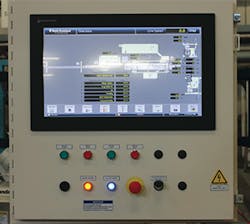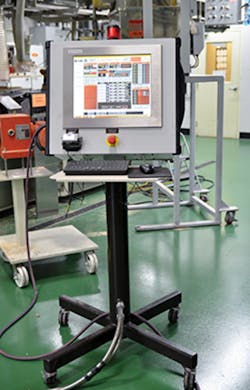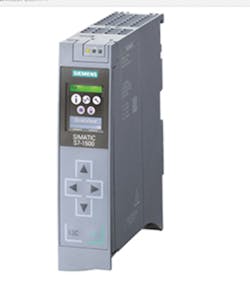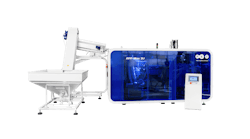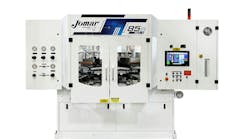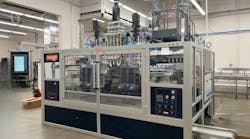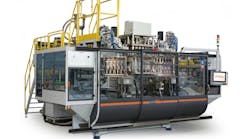Extruder manufacturers are incorporating greater capabilities into their controls, allowing easier integration of ancillary equipment, enhanced data archiving and simpler troubleshooting. The new capabilities are pushing the boundaries on high-end controllers for extruders, while offering more value on lower-priced process controls.
Extruder manufacturers are offering new features and enhancements to existing controls with an eye on long-term trends that are shaping the extrusion industry. Among the major trends is that controls are becoming easier to use. Touch screens are becoming more available, even on lower-priced controls. Extruder suppliers are focusing on the entire production line, tying in control data from upstream and downstream equipment. Open industrial networks such as Ethernet IP have made it easier for machine designers to tie in digital devices and also have facilitated the use of remote monitoring and troubleshooting at customers' plants.
NEW CONTROLS MAKE DEBUT
Milacron LLC, Cincinnati, is introducing the Matrix extrusion control at the K show this month. With a 10.1-inch touch screen, it will feature a troubleshooting screen, alarm codes and trending capabilities, although without the ability to show trends graphically, said Michael Puhalla, Milacron's director of engineering and technology.
Puhalla noted that single-screw extruders often come equipped with discrete controls. He said the touch-screen-based Matrix was developed with an eye on the generational shifts taking place among plant-floor personnel, who are more comfortable today with interactive personal devices than with individual knobs and buttons.
The control also will have a communication package allowing processors to add a single piece of upstream or downstream equipment without the need for programming. "We are going to have that feature built into the control, and all they need to do is toggle that on or off, and do some basic set-up on it," he said. At the K show, the Matrix control will be demonstrated on Milacron's new SV250 singlescrew extruder.
Puhalla said that one of the biggest advances in machine controls for his customers is the ability to connect remotely to the extruder, especially for troubleshooting problems. "Remote monitoring over the cloud is not new to Milacron," he said. "But it's newer to extrusion." The company offers its customers remote-monitoring services, which he said are especially valuable when dealing with expensive components such as gearboxes.
The company also is showing the latest generation of its Mosaic+ at the K show. It offers increased processor capabilities and speed; the ability to communicate remotely for service and troubleshooting; and a radio-frequency identification (RFID) tag log-in/log-out feature to monitor personnel who access it. The control has a 21-inch touch screen for viewing, and keys around the screen's bezel.
CONTROL MORE THAN A MACHINE
Davis-Standard LLC, Pawcatuck, Conn., is introducing an update of its lower-priced DS-eTPC controller in the first quarter of 2017, said John Clemens, the company's director of extruder controls. He said the DS-eTPC control will have a larger touch screen with zoom capability and more connectivity than the current control.
He said the DS-eTPC control will be priced comparably to discrete push-button controls. "You are getting the capability to control a small line, instead of just the extruder, at a price that is comparable to controls just for an extruder."
He added that Davis-Standard is able to offer the control at a lower price because it offers fixed, preconfigured options that save on engineering costs.
At the K show, the company also will be exhibiting the latest version of its solid-state Epic III control, which will have an enhanced graphical HMI on a 23-inch screen.
Clemens said the company is getting more requests to tie production information into customers' management information systems, so personnel can view production data in real time from the office or remote locations. He also is seeing more requests for customized information, especially in the medical industry, where companies need to ensure that products are FDA-compliant.
AVOIDING OBSOLESCENCE
Among the extruder-control developments at Entek, Lebanon, Ore., is the integration of a temperature control for extruder barrel zones and auxiliary equipment into its Allen-Bradley PLCs, according to Al Bailey, the company's East Coast controls manager.
Bailey said the move makes sense, both in terms of the service life of the components and their performance. He said the PLCs on Entek's extruders have a long service life; it's still possible to find replacements for PLCs that were installed on extruders 20 years ago. "Allen-Bradley prides itself on the lifespan of its product line," he said. On the other hand, temperature controllers, which typically have a service life of 10 or 11 years, do not match the service life of the rest of the components used in the control system.
By bringing the temperature control into the PLC, Entek is replacing the older analog temperature controllers that tend to become obsolete quickly. "The advantage to that is, since we are doing the control inside of the PLC, you don't have a third-party component that is going to be obsolete," he said.
With the change, Entek is following an industry trend. He said the company has been holding off until it could incorporate auto-tuning — the ability of the PLC to modify control parameters by itself — into the controls to improve the temperature control of the zone. It has now developed an algorithm with auto-tuning capabilities.
In Bailey's view, open protocols such as Ethernet IP have made it possible to get more and better data from devices. He gives the example of the use of a mass-flow meter to monitor oil injection into an extruder. The original mass-flow meters that Entek used provided two analog outputs to the PLC, one for mass flow and the other for the density of the media.
Ethernet capabilities now allow the mass-flow meter to deliver more information, such as volumetric flow, density and temperature. That extra information is useful to machine operators. "They can see if there is a temperature issue, they can trend the density, see if density changes in the raw material," he said. "There is a lot that you couldn't do before, because it was cost-prohibitive, because those weren't on an open network."
PROGRESS, WITH MINIMAL DISRUPTION
Control suppliers are continuing to drive innovations by extruder OEMs. Brian Fieseler, program manager for OEMs at Rockwell Automation Inc., Milwaukee, calls the company's controls strategy "progressive elaboration." In other words, it avoids radical changes in its controls technology because of the disruption it would create for its customers, the OEMs, because they need the support of the equipment 25 to 30 years after their capital expenditure, he said.
Fieseler noted that the company's Logix control platform, which is available in different levels, continues to evolve, both in terms of scale and capabilities. "Our company is focused on two areas in automation," he said. "One is providing the means for a connected enterprise for automation customers. The other is to produce a smart machine down at the machine level that can support and undergird that connected enterprise strategy when the end users are ready to adopt it. It's a long-term strategy." Rockwell plans to make specific new control product introductions at its Automation Fair next month in Atlanta.
Siemens Industry Inc., Norcross, Ga., has introduced a new version of its Temperature Control Processor (TCP) software that is optimized to work with the Simatic S7-1500 PLC. Mathias Radziwill, business development manager for plastics OEMs, said that the TCP-1500 software provides a simple preconfigured screen to monitor temperature, and allows the operator to adjust PID parameters for temperature control for a higher-quality product from the extruder. Alarm functions are embedded in the software. The product will be on hand at the K show.
Radziwill said Siemens has taken a step toward easier integration of devices by incorporating OPC Unified Architecture, an industrial protocol for interoperability, into the company's Totally Integrated Information engineering platform. That development will allow easier integration of third-party devices into Siemens controllers, he said.
John DeGaspari, senior correspondent
Contact:
Davis-Standard LLC, 860-599-1010, www.davis-standard.com
Entek, 541-259-1068, www.entek.com
Milacron LLC, 513-536-2000, www.milacron.com
Rockwell Automation Inc., 414-382-2000, www.rockwellautomation.com
Siemens Industry Inc., 800-743-6367, www.usa.siemens.com

